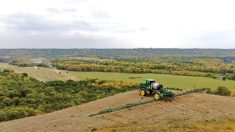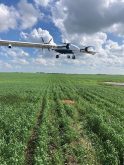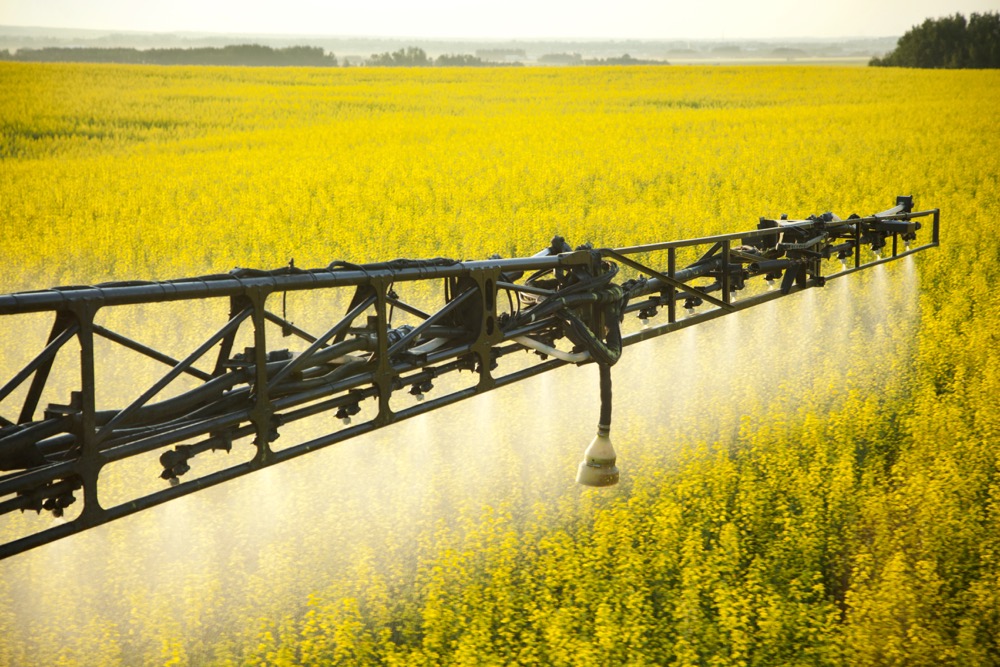Dr. Tom Wolf, researcher and owner of Agrimetrix Research and Training, says aerial applicators are “tremendously important.”
“They apply spray under conditions that a ground rig can’t — for example, with soil moisture. They cover much more area than a ground rig ever can so they can be more timely.
”Jill Lane, executive director of the Canadian Aerial Applicators Association (CAAA), agrees, writing by email that more and more Prairie acres are being sprayed from the air.
If you’re considering aerial fungicide application this season, make sure to ask about timing and water volume.
Read Also

Claas brings 1000 Series SP forage harvesters to Canada
In mid-August, Claas unveiled its new line of Jaguar forage harvesters at an event in Visalia, California, deep in the heart of that state’s dairy region.
Timing: Whether you’re spraying from the ground or from the air, timing is the most critical issue. “Even just a day or two on either side of an ideal timing can make a big difference in terms of effectiveness,” says Wolf.
Lane concurs. Farmers and agronomists should make sure aerial applicators can provide the service within the application window.
Water volume: Water volume is also key. Wolf recommends asking these questions: “What water volume are you applying? What are you doing to control drift? What does the label say for water volume? How do you reconcile those things? What would it cost to do more water?”
Some fixed-wing aircraft are high capacity, capable of ferrying 800 U.S. gallons, Wolf says. But new atomizer technologies allow some applicators to push water volumes lower. Wolf has had calls from people wondering how aerial applicators can pull it off.
“They’re doing it because they’re using a much finer spray. They have a tremendous drift risk as a result of that. They are certainly cautious about when they spray. But there’s no magic here.”
Applying a finer spay than the label allows is illegal, Wolf says, because of the drift risk. “That is something that we all have to respect because our business is at stake here,” says Wolf.
Lane says the CAAA only supports applications that follow labels.
Like other ag businesses, the aerial application industry is facing growing regulations and public pressure. Lane recommends farmers and agrologists look for aerial applicators who hold all provincial and federal licences.
Helicopter application still a niche
Helicopters seem to have an edge over fixed wing aircraft in some situations. They can turn more quickly and handle fields with more obstacles. They also come with their own landing pad, usually on the back of the tender truck.
But the CAAA hasn’t seen a big increase in helicopter use in either agriculture or forestry, says Lane.
Some fixed-wing operators have added a helicopter to their fleet, she says. The few helicopter companies expanding into aerial application could be driven by slower times in their own market, such as oil, she adds.
Wolf says helicopter applicators are more common in the U.S. In Western Canada, fields tend to be large and uniform, making them suitable for fixed wing aircraft. But helicopters do compete remarkably well in some areas, he adds.
- Read more: Access helicopters rises to the challenge
Wolf sees opportunities with helicopters to have a low-drift spray because other industries where helicopters are used have always had low-drift requirements. “They actually have a number of atomizers at their disposal that drift less than fixed-wing aircraft.”
If a helicopter uses the same CP nozzles used by fixed-wing aircraft, the helicopter’s slower speed should add up to a coarser spray. “The faster they fly, typically the finer the spray becomes.”
Wolf hasn’t done any work on calibration of helicopters yet. But he has worked with fixed-wing aircraft. Asked whether fixed-wing aircraft push spray into the canopy, he said based on his own first-hand experience, they don’t. “It’s a bit of a myth.”
Wolf hasn’t seen first-hand whether rotary aircraft will force the spray into the crop canopy. But he’s sceptical of such claims for several reasons:
- The helicopter only produces enough downdraft to stay aloft, so the lighter the aircraft, the less downdraft.
- Forward speed disperses the downdraft force over distance. “So the actual amount of downdraft per square metre is quite low because you’re moving forward so quickly.”
- Flying height also comes into play. To avoid wingtip vortices, pilots typically fly higher than they once did.
- The wind travelling down from the wing arrives at the canopy before any droplets.
Wolf hasn’t entirely ruled out downdraft playing a role with rotary aircraft.
“But I wouldn’t get one because of it,” he says.
And he wouldn’t use it as a reason to cut water volumes, either.
For more information on the Canadian Aerial Applicators Association, plus an online member directory, visit canadianaerialapplicators.com.
















